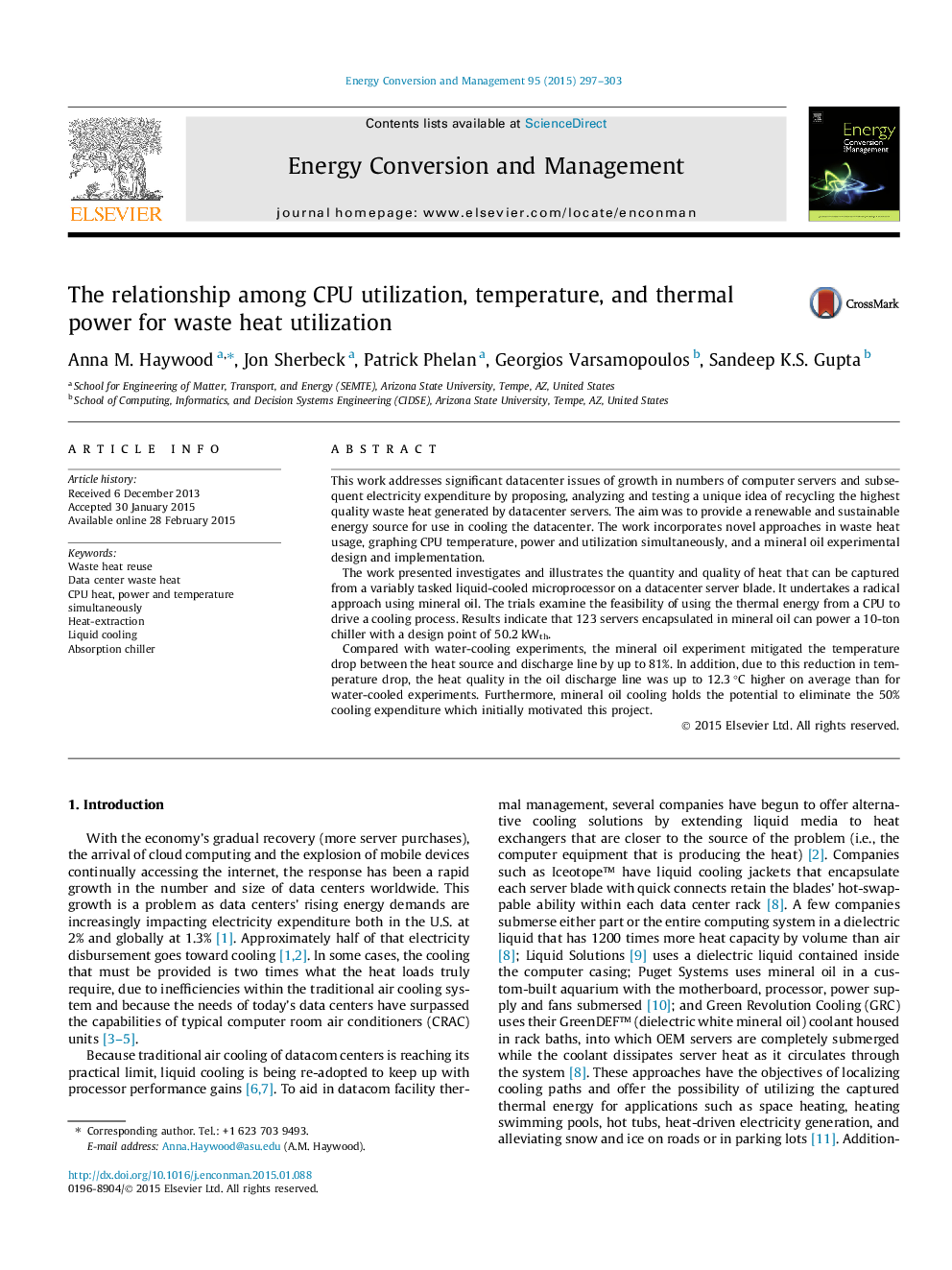| Article ID | Journal | Published Year | Pages | File Type |
|---|---|---|---|---|
| 765457 | Energy Conversion and Management | 2015 | 7 Pages |
•This work graphs a triad relationship among CPU utilization, temperature and power.•Using a custom-built cold plate, we were able capture CPU-generated high quality heat.•The work undertakes a radical approach using mineral oil to directly cool CPUs.•We found that it is possible to use CPU waste energy to power an absorption chiller.
This work addresses significant datacenter issues of growth in numbers of computer servers and subsequent electricity expenditure by proposing, analyzing and testing a unique idea of recycling the highest quality waste heat generated by datacenter servers. The aim was to provide a renewable and sustainable energy source for use in cooling the datacenter. The work incorporates novel approaches in waste heat usage, graphing CPU temperature, power and utilization simultaneously, and a mineral oil experimental design and implementation.The work presented investigates and illustrates the quantity and quality of heat that can be captured from a variably tasked liquid-cooled microprocessor on a datacenter server blade. It undertakes a radical approach using mineral oil. The trials examine the feasibility of using the thermal energy from a CPU to drive a cooling process. Results indicate that 123 servers encapsulated in mineral oil can power a 10-ton chiller with a design point of 50.2 kWth.Compared with water-cooling experiments, the mineral oil experiment mitigated the temperature drop between the heat source and discharge line by up to 81%. In addition, due to this reduction in temperature drop, the heat quality in the oil discharge line was up to 12.3 °C higher on average than for water-cooled experiments. Furthermore, mineral oil cooling holds the potential to eliminate the 50% cooling expenditure which initially motivated this project.
